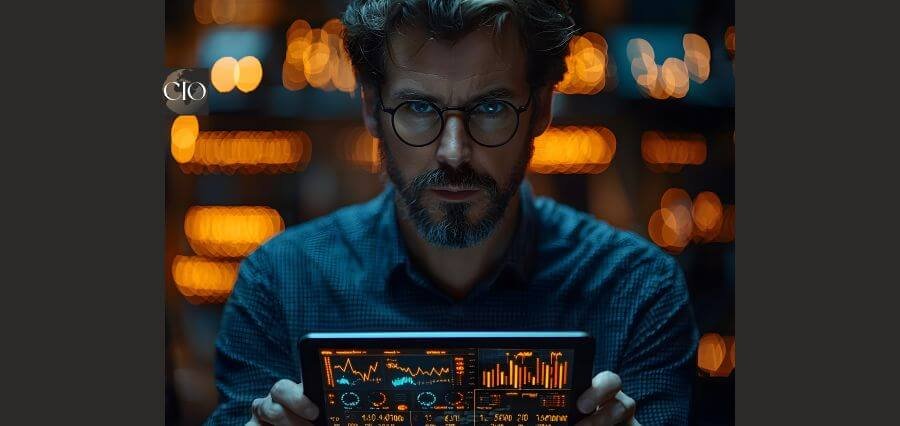In this high-tech, high-speed economy, leaders who were at the top of their markets years ago are now fighting to keep up with hostile, nimble invaders. Pedigree and size are no longer synonymous with success it’s vision. Visionary CEOs are at the core those who have a vision of what is to come and most importantly, the strategic courage to create it.
These people are not satisfied with being part of the status quo; they want to shatter it, redefine what is normal, and set up boundaries which other people do not even know exist.
The Essence of Visionary Leadership
Visionary CEOs are different from every other executive in one essential sense: they are forward-looking leaders. They have the capability to foresee coming trends, consumer attitudes, and technological changes long before they become popular. They are not responsive commanders but inventive designers of the future. This forward-looking strategy enables them to anticipate disruption and position their organizations to succeed within it.
Consider Elon Musk, for instance. Whatever criticism there is about his approach, no one can deny that he has transformed industries—automotive, space exploration through big, visionary moves. To the same degree, Satya Nadella’s vision at Microsoft set the giant tech firm off track by diving headlong into cloud computing and artificial intelligence before anyone else did. These executives didn’t merely respond to they led to change.
Strategic Innovation as a Catalyst
The defining characteristic of transformational leadership is strategic innovation. Innovation usually equates to product development or technology, but visionary CEOs think more broadly. They infuse innovation in the firm’s DNA—culture, operations, business models, and customer experience.
These CEOs realize that innovation is a process and not an event. Consider Reed Hastings of Netflix, for example. He evolved the company from DVD rentals to streaming, and yet again to creating original content. Each jump was followed by a strategic move expecting market evolution and setting the company well in advance of it.
Visionary CEOs are adept at resource realignment, regularly redeploying capital and human capability resources to new ventures and shedding investments that are no longer yielding returns. They are not afraid to make unpopular decisions in the short term if this will be the path toward longer-term viability and growth.
Empowering People and Culture
Strategic innovation is not performed in a vacuum; it operates in a culture of creativity, trust, and psychological safety. Visionary CEOs are dedicated to unleashing everyone in the organization. They realize that authentic change will only result if they are able to energize and mobilize their people to an inspiring vision.
These executives flatten hierarchies, promote transparency, and promote risk-taking. By creating a platform on which ideas are open to every level, they leverage collective intelligence. It is through this democratization of innovation that they are able to draw on a broader range of insights and solutions.
In addition, visionary CEOs do not hesitate to abandon the usual leadership clichés. They talk less, listen more, are humble about not knowing, and always seek alternative views. Such open-mindedness allows them to spot blind spots and drives more innovation.
Balancing Vision with Execution
Having a vision for the big picture is half the battle. What sets apart visionary CEOs from the rest is their power to bring discipline to executing on that vision. They find the razor-thin margin between grand thinking and wrangling the nitty-gritty details needed to transform ideas into accomplishments.
Execution demands systems thinking a systems perspective about how all different components of the business universe fit together. Visionary CEOs know how to synchronize technology, talent, and timing to produce impact that can be scaled up. They value highly agility, so their companies can shift directions when called upon without losing sight of their long-term objectives.
They also invest in measurement and feedback infrastructure that enables them to measure progress, learn rapidly, and iterate rapidly. This vision-action-feedback loop allows them to remain dynamic but grounded.
Visionary CEOs as Industry Disruptors
Industries are changing more rapidly than ever before. Sustainability, artificial intelligence, digital transformation, and shifting consumer values are reshaping the business landscape. Visionary CEOs view such changes as not threats but opportunities to rethink the value proposition of their industries.
Consider how Patagonia’s Yvon Chouinard built environmentalism into the company’s business model years earlier than popular culture. His leadership drove the currently flourishing sustainable fashion trend. In a similar manner, Lisa Su of AMD pivoted the company on a laser beam strategy of high-performance computing and put it in line with considerably larger competitors.
These leaders are not content being the best in the world—these leaders want to be best for the world. They do not only measure success with profit, but impact, relevance, and legacy as well.
Looking Ahead
The farther we go into the digital era, the more pressing the demand for visionary leadership will be. The challenges companies are going to encounter climate change, the ethics of AI, global unrest are not suitable for quarterly thinking. They demand long-term vision, bravery, and a resolute commitment to innovation.
Firms that position themselves under Visionary CEOs are best equipped to ride out uncertainty and profit from future developments. Visionary CEOs do not only offer guidance but also inspiration. They give individuals something to have faith in, something to strive for, and something to battle for.
With a world that continues to evolve day by day, there is one thing that never changes: the unstoppable power of vision. And with the vision in the right leader’s hands, vision doesn’t just shape businesses but industries.
Read More: The Future of Tech Integration in Traditional Industries




